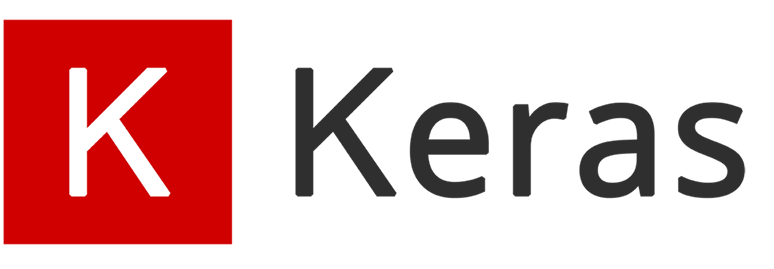Custom Loss Functions in Keras: A Complete Guide
Learn how to define and implement your own custom loss functions in Keras for tailored model training and improved performance on specific tasks.
Learn how to define and implement your own custom loss functions in Keras for tailored model training and improved performance on specific tasks.
In the realm of machine learning, tailoring loss functions to specific tasks can significantly enhance model performance. Keras, a popular deep learning library, provides the flexibility to define and implement custom loss functions. This empowers you to go beyond standard loss functions like mean squared error or categorical cross-entropy and incorporate domain-specific knowledge into your models. This article outlines a step-by-step guide to crafting and integrating custom loss functions in Keras, enabling you to optimize your models for unique challenges.
Define your function: Start by defining a Python function that takes two arguments: y_true (true labels) and y_pred (predicted labels).
def custom_loss(y_true, y_pred):
# Your custom loss calculation here
return loss_valueUse Keras backend operations: Inside your custom loss function, use functions from tf.keras.backend (imported as K) to perform operations on tensors. This ensures your function works with TensorFlow.
import tensorflow.keras.backend as K
def custom_loss(y_true, y_pred):
squared_difference = K.square(y_true - y_pred)
return K.mean(squared_difference, axis=-1) Compile your model with the custom loss: When compiling your Keras model, pass the custom_loss function as the loss argument.
model.compile(optimizer='adam', loss=custom_loss, metrics=['accuracy'])Example: Weighted Mean Squared Error
import tensorflow.keras.backend as K
def weighted_mse(y_true, y_pred):
weights = K.cast(y_true > 0, dtype='float32') * 5 + 1
return K.mean(K.square(y_true - y_pred) * weights)Key Points:
tf.keras.backend functions for tensor operations.This code provides examples of custom loss functions in Keras, including weighted mean squared error, weighted categorical crossentropy, and Huber loss. Each example includes the Python code for defining the loss function and demonstrates how to use it during model compilation with the compile method. The code uses TensorFlow operations for calculations and allows for customization of parameters like weights and delta values.
Here are a few examples of custom loss functions in Keras, demonstrating the principles outlined in the article:
1. Weighted Mean Squared Error (as in the article):
import tensorflow as tf
def weighted_mse(y_true, y_pred):
"""
Calculates mean squared error with higher weight for positive values.
Args:
y_true: True labels.
y_pred: Predicted labels.
Returns:
Weighted mean squared error.
"""
weights = tf.cast(y_true > 0, dtype=tf.float32) * 5 + 1
return tf.reduce_mean(tf.square(y_true - y_pred) * weights)
# Example usage during model compilation
model.compile(optimizer='adam', loss=weighted_mse, metrics=['accuracy'])2. Custom Loss with Class Weights:
import tensorflow as tf
def weighted_categorical_crossentropy(class_weights):
"""
Categorical crossentropy with adjustable class weights.
Args:
class_weights: A list or tensor with weights for each class.
Returns:
A custom loss function.
"""
class_weights = tf.convert_to_tensor(class_weights, dtype=tf.float32)
def loss(y_true, y_pred):
# Multiply each sample's loss by its corresponding class weight
sample_losses = tf.keras.losses.categorical_crossentropy(y_true, y_pred)
weighted_losses = sample_losses * tf.reduce_sum(y_true * class_weights, axis=1)
return tf.reduce_mean(weighted_losses)
return loss
# Example usage with class weights [1.0, 2.5, 1.5]
model.compile(optimizer='adam',
loss=weighted_categorical_crossentropy([1.0, 2.5, 1.5]),
metrics=['accuracy'])3. Huber Loss:
import tensorflow as tf
def huber_loss(delta=1.0):
"""
Calculates Huber loss, less sensitive to outliers than MSE.
Args:
delta: Threshold for switching between linear and squared loss.
Returns:
Huber loss value.
"""
def loss(y_true, y_pred):
error = y_true - y_pred
abs_error = tf.abs(error)
squared_loss = 0.5 * tf.square(error)
linear_loss = delta * (abs_error - 0.5 * delta)
return tf.where(abs_error <= delta, squared_loss, linear_loss)
return loss
# Example usage with delta = 1.5
model.compile(optimizer='adam', loss=huber_loss(delta=1.5), metrics=['mae'])These examples demonstrate how to define custom loss functions in Keras using tf.keras.backend operations. Remember to consider the specific requirements of your problem and choose or design a loss function that aligns with your goals.
Understanding the Importance:
Implementation Details:
tf.keras.backend, with TensorFlow 2.0 and eager execution, you can often use standard TensorFlow operations directly within your custom loss functions for simpler code.Advanced Considerations:
y_true and y_pred, use a closure (a function that returns another function) to pass these parameters.Choosing the Right Loss Function:
| Feature | Description |
|---|---|
| Purpose | This guide explains how to define and use custom loss functions in Keras for machine learning models. |
| Steps | 1. Define a Python function: Create a function with y_true (true labels) and y_pred (predicted labels) as arguments. 2. Use Keras backend operations: Utilize functions from tf.keras.backend for tensor operations within the function. 3. Compile the model: Pass the custom loss function as the loss argument during model compilation. |
| Example | Provides a code example of a weighted Mean Squared Error (MSE) loss function. |
| Key Points | - The custom loss function must return a single loss value. - Use tf.keras.backend for tensor operations to ensure compatibility with TensorFlow. - Closures can be used to pass additional arguments to the custom loss function. - The custom loss function should be differentiable for gradient-based optimization algorithms. |
By enabling the creation of loss functions tailored to specific data sets and desired outcomes, Keras empowers developers to push the boundaries of model accuracy and address unique challenges in diverse machine learning applications. Understanding the principles of custom loss function creation, along with careful implementation and testing, can lead to significant improvements in model performance and open up new possibilities in solving complex problems. Whether it's prioritizing certain prediction types, handling imbalanced datasets, or incorporating domain-specific knowledge, custom loss functions in Keras provide a valuable tool for refining machine learning models and achieving superior results.
 Keras documentation: Losses | Usage of losses with compile() & fit(). A loss function is one of the two arguments required for compiling a Keras model: ... Creating custom losses. Any ...
Keras documentation: Losses | Usage of losses with compile() & fit(). A loss function is one of the two arguments required for compiling a Keras model: ... Creating custom losses. Any ... How To Build Custom Loss Functions In Keras For Any Use Case ... | In this article, there is an in-depth discussion on
How To Build Custom Loss Functions In Keras For Any Use Case ... | In this article, there is an in-depth discussion on How to write a custom loss function with additional arguments in Keras | Part 1 of the “how & why”-series
How to write a custom loss function with additional arguments in Keras | Part 1 of the “how & why”-series Creating Custom Loss Functions in Keras/TensorFlow | Saturn ... | In the world of machine learning, loss functions play a pivotal role. They measure the inconsistency between predicted and actual outcomes, guiding the model towards accuracy. While Keras and TensorFlow offer a variety of pre-defined loss functions, sometimes, you may need to design your own to cater to specific project needs. This blog post will guide you through the process of creating custom loss functions in Keras/TensorFlow.
Creating Custom Loss Functions in Keras/TensorFlow | Saturn ... | In the world of machine learning, loss functions play a pivotal role. They measure the inconsistency between predicted and actual outcomes, guiding the model towards accuracy. While Keras and TensorFlow offer a variety of pre-defined loss functions, sometimes, you may need to design your own to cater to specific project needs. This blog post will guide you through the process of creating custom loss functions in Keras/TensorFlow. On Writing Custom Loss Functions in Keras | by Yanfeng Liu | Medium | If you are doing research in deep learning, chances are that you have to write your own loss functions pretty often. I was playing with a…
On Writing Custom Loss Functions in Keras | by Yanfeng Liu | Medium | If you are doing research in deep learning, chances are that you have to write your own loss functions pretty often. I was playing with a… Derivatives and custom loss functions in Keras - Part 2 (2017) - fast ... | I remember in a few of the lessons @jeremy talked about how we don’t need to worry about the derivative side of our loss function because keras could automatically calculate it for us. I just want to make sure my understanding there is correct, particularly in the case for custom loss functions. Can we combine arbitrary functions in our loss function and then expect keras to solve for the derivative in the underlying loss function space? Is keras doing so by solving for the local gradient? I...
Derivatives and custom loss functions in Keras - Part 2 (2017) - fast ... | I remember in a few of the lessons @jeremy talked about how we don’t need to worry about the derivative side of our loss function because keras could automatically calculate it for us. I just want to make sure my understanding there is correct, particularly in the case for custom loss functions. Can we combine arbitrary functions in our loss function and then expect keras to solve for the derivative in the underlying loss function space? Is keras doing so by solving for the local gradient? I...